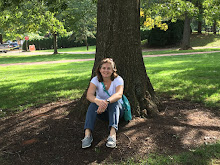In our studio, we use the
Studio Thinking 8 Habits of mind as a framework to talk about the learning we see happening in the artistic process. These habits of mind were developed at
Project Zero and have been applied in various arts and educational settings from visual art classes to dance studios and arts integration lessons in general education classes. As we write, think and talk about these ideas more and more, I have been struck by the idea that these habits of mind are equally applicable at home as in the studio.
So, let's start with the habits of mind, "Develop Craft" Developing Craft is similary to establishing routine and setting up a time and place to practice, work or play. It includes skill development, the basics of using tools, developing technique. In the studio this means learning about materials: the uses for tools, techniques for materials, as well as care and cleaning routines. With clay, even the youngest artists learn that we put the clay back in the bag with some water to preserve it's plasticity for the next use. As kids begin to sculpt with clay they learn the process of connecting clay pieces by scoring and slipping. Each of these things is part of the craft of working with clay. When painting, young artists are introduced to ways to care for brushes - for them color mixing is very experiential happening before their eyes on the paper. As kids grow as painters, they learn to be more deliberate in their color mixing, using a color wheel as a tool for mixing and planning recipes of colors to achieve just the right shade or tint. Again, this is all part of developing craft in painting.
At home, I think about developing craft when working with my kids in the kitchen, learning where things are kept, what tools are used to measure and to combine ingredients. This can be as complex as getting the feel for separating an egg or as simple as knowing how to use the sponge correctly to clean up spills. Clean-up is a big part of developing craft, especially in a shared space; materials need to be cared for so they will be ready for use. I came home the other day and noticed our rakes lying in the front yard. I had been so pleased with my children's enthusiasm for helping rake (motivated by being able to jump in a REALLY big pile) that I forgot about taking care of our tools. So as you go about chores at home or practice hobbies, work in the garden, even washing your car, notice the routines and craft you use and share this with your children. The sharing is likely to encourage their help and a great way to begin is by knowing where things are kept, how to set up and how to clean up.
Back to school is a good time to think about Developing Craft - as we settle into routines and work to establish good habits we are crafting our lives.



